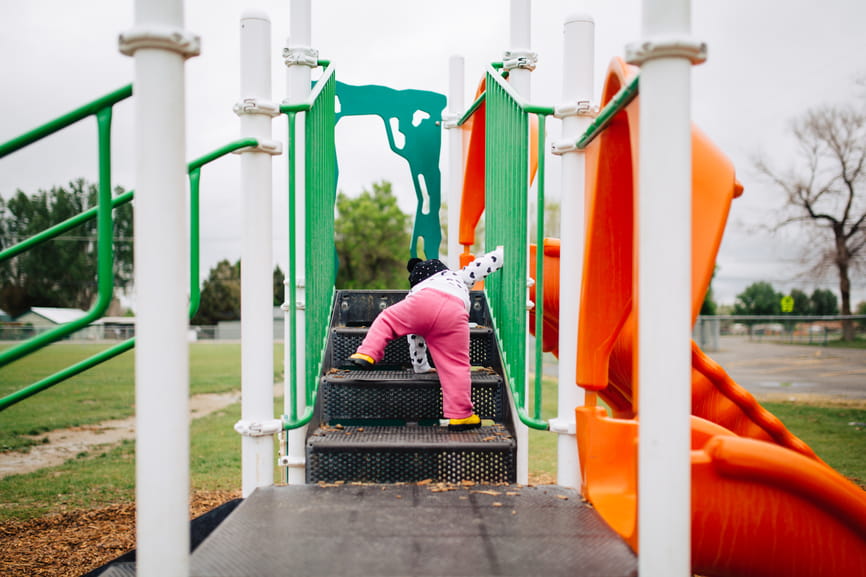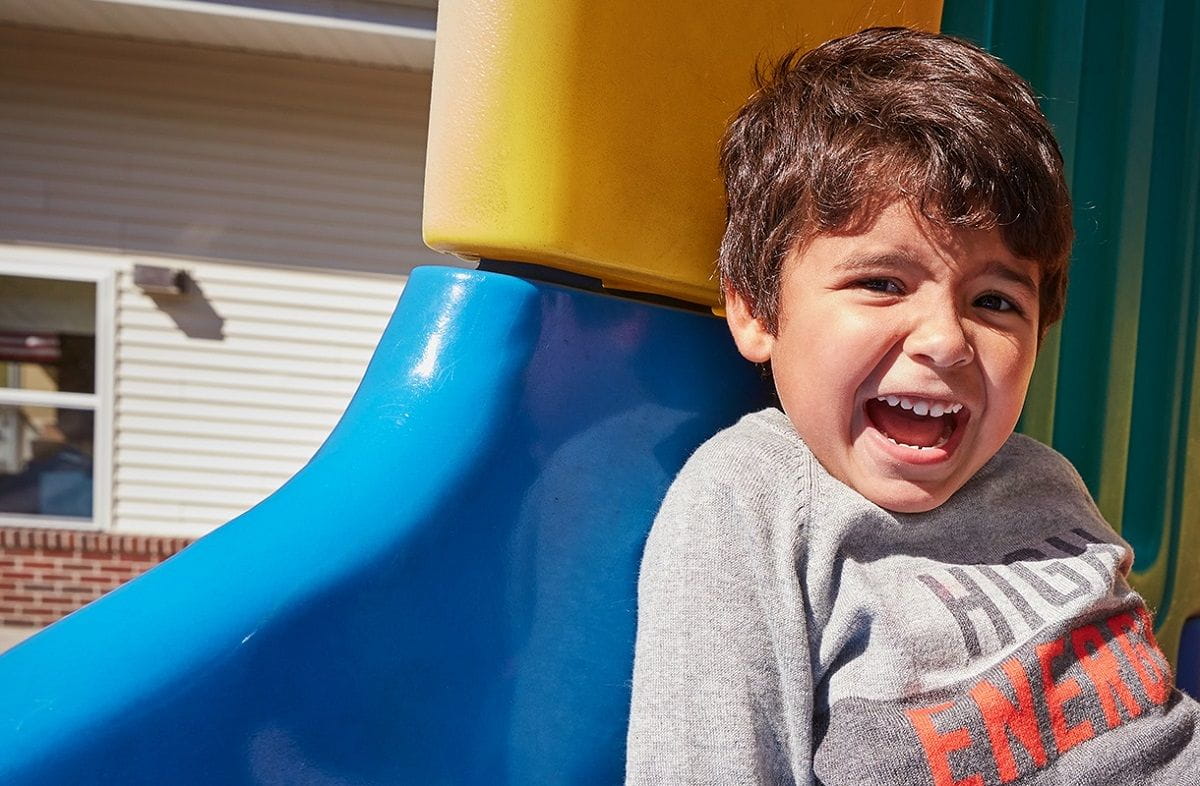Where’s the Merry-Go-Round!? Why Modern Playgrounds Don’t Look Like They Used To

You’ve probably noticed that playgrounds today don’t look a lot like the playgrounds from your childhood. There’s a reason for that: Today, we have a deeper understanding of the way kids of different abilities, sizes, and stages of development move; we also know a lot more about how to keep kids safe on playgrounds. According to the National Program for Playground Safety at the University of Northern Iowa, more than 200,000 people are sent to the emergency room with playground injuries each year.
Luckily, new equipment designs and more stringent regulations are making playgrounds safer all the time. So while you may be nostalgic for that old metal merry-go-round with the chipping paint, new playgrounds are doing a much better job of keeping your kids out of the ER.
Here are a few ways today’s modern playgrounds are keeping more kids injury-free.
Everyone Belongs In Our Circle
At KinderCare, we’re committed to building warm, welcoming and supportive classrooms for children of all abilities, backgrounds and experiences.
Find a center near you1. Modern Playgrounds Provide Softer Landings
Once upon a time, concrete, grass, and asphalt surfaces were commonplace on playgrounds, but newer materials like rubber matting, sand, and bark chips can cut injury rates in half. Falls are the No. 1 cause of playground injuries, according to the Children’s Safety Network, so many playground regulations address the material under and around the play area in order to cushion tumbles and drops.

2. Modern Playgrounds Are Built for Every Age
Gone are the days of the one-size-fits-all approach to playground design. According to the U. S. Consumer Product Safety Commission Public Playground Safety Handbook, newer playgrounds are designed to create distinct play areas for toddlers, young children ages two to five, and older kids ages five to 12 that are appropriate for their different physical, social, and emotional stages of development.
Equipment for younger children, for example, encourages crawling, standing, exploration, and sensory discovery—without advanced features like balance walks, free-standing climbing walls, overhead rings, tall slides, and sliding poles.
3. Modern Playgrounds Are Made Better
What was your childhood playground made of? Chances are the answer is metal, lead-painted fixtures, and splinter-prone wood that was treated with arsenic. New guidelines for modern playgrounds advise using plastic, coated metal to avoid burns on hot days in addition to rot- and splinter-resistant wood. That’s good!
4. Modern Playgrounds Encourage Mindfulness
Yes, much has been written about the dawning of the age of helicopter parents, but active supervision is a major factor in preventing injuries. That’s why modern playgrounds make supervision easy with well-designed lines of sight that ensure all areas of the playground are visible from park benches and tables. Playgrounds have also started using clear plastic to create tubes or other crawl spaces so children are never out of sight.
5. Modern Playgrounds Nix Dangerous Equipment
According to the U. S. Consumer Product Safety Commission, some formerly popular kinds of playground equipment just aren’t safe for public playgrounds because they are major contributors to injuries. That’s why you won’t see old-school merry-go-rounds, trampolines, seesaws without springs, or multiple-seat swings on new playgrounds.
A Lifetime Of Confidence Starts Here
Our teachers help every child build the confidence they need to try new things and explore the world around them.
Search for a center near you6. Some Modern Playgrounds Are Made for All
Although the Americans with Disabilities Act of 1990 created new regulations for playground accessibility, many new playgrounds are still not fully accessible to children and parents with disabilities. In Portland, Oregon, an organization called Harper’s Playground has adapted local playgrounds to be more easily accessible for those with disabilities.
7. Bring Playground Safety to Your School
To help parents, communities, activists, and schools create safer playgrounds, the National Program for Playground Safety has designed a thorough report card to make sure local playgrounds are safe in several categories: supervision, age-appropriate design, fall protection, and equipment maintenance. If you find a way to improve your local playgrounds, contact your local parks department or school district to help make your community safer for everyone!
Have a play structure at your house? The U.S. Consumer Product Safety Commission offers a handbook and checklist for residential play areas to keep backyard fun as safe as public areas.





